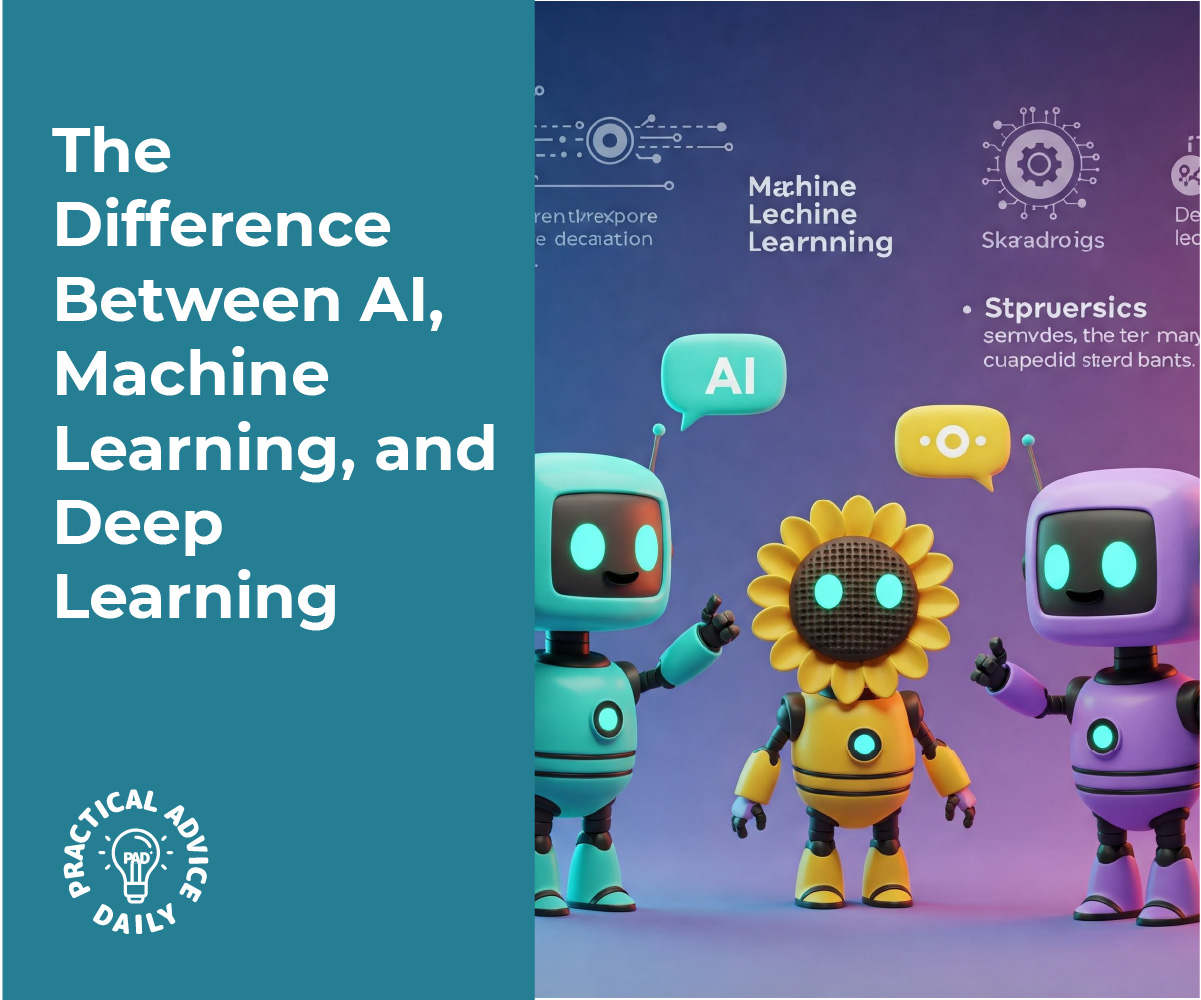Heard the terms AI, machine learning, or deep learning and felt a bit lost? You’re not alone. These words are often used like they mean the same thing—but they don’t.
In this easy-to-understand guide, we’ll clear up the confusion and show you how these technologies connect (and how they’re different). Don’t worry—no tech background is needed. By the end, you’ll feel more confident understanding these popular terms and how they show up in your daily life.
🔍 Key Takeaways
- Artificial Intelligence (AI) is the big idea—machines doing tasks in smart ways.
- Machine Learning (ML) is a type of AI where computers learn from data.
- Deep Learning (DL) is a type of machine learning that mimics how the human brain works.
- You’ve probably used all three without even realizing it—think voice assistants, email filters, or Netflix recommendations.
- These terms build on each other, like Russian nesting dolls: deep learning fits inside machine learning, which fits inside AI.
What Is Artificial Intelligence (AI)?
Think of AI as the big umbrella.
Artificial Intelligence is the overall idea of computers or machines doing things that would normally need human smarts—like problem-solving, understanding language, or recognizing faces.
Everyday Examples:
- Siri or Alexa answering your questions
- Google Maps suggesting the fastest route
- Your email moving spam into a junk folder automatically
AI doesn’t have to be fancy robots. Even a simple program that can make decisions based on input is a form of AI.
What Is Machine Learning (ML)?
Machine Learning is a smaller part of AI.
Instead of being directly programmed, a machine “learns” by looking at lots of examples. It spots patterns and uses those to make better decisions in the future.
Imagine This:
You show a computer 1000 pictures of cats and dogs. You tell it which are which. Over time, it starts to figure out how to tell a cat from a dog on its own—even with new photos.
Real-Life Examples:
- Netflix recommending shows based on what you watch
- Banks spotting suspicious activity on your credit card
- Your phone unlocking with facial recognition
What Is Deep Learning (DL)?
Deep Learning is a more advanced kind of machine learning.
It’s inspired by how the human brain works—using “neural networks” to think in layers. This helps computers handle more complex tasks, like understanding speech or identifying objects in photos.
Picture This:
You give a deep learning system tons of photos—not just cats and dogs, but animals in different lighting, backgrounds, and angles. It can learn tiny details and become very accurate at spotting what’s what.
Real-Life Examples:
- Voice assistants understanding what you say, even with background noise
- Self-driving cars recognizing traffic signs and people
- Facebook tagging your friends in photos automatically
A Simple Comparison
| Term | What It Means | Easy Example |
| AI | The general idea of machines acting smart | Siri answering a question |
| Machine Learning | Learning from data to improve over time | Netflix recommending what to watch |
| Deep Learning | Advanced learning using layered networks | Self-driving cars “seeing” the road |
Final Thoughts
Understanding the difference between AI, machine learning, and deep learning doesn’t have to be hard. At the core, it’s about how computers are getting better at doing things we used to do ourselves—sometimes with a little help (machine learning), and sometimes with advanced smarts (deep learning).
The next time someone mentions these terms, you’ll know exactly what they mean—and maybe even impress them a little. Curious to go further? Check out our other easy tech explainers!
